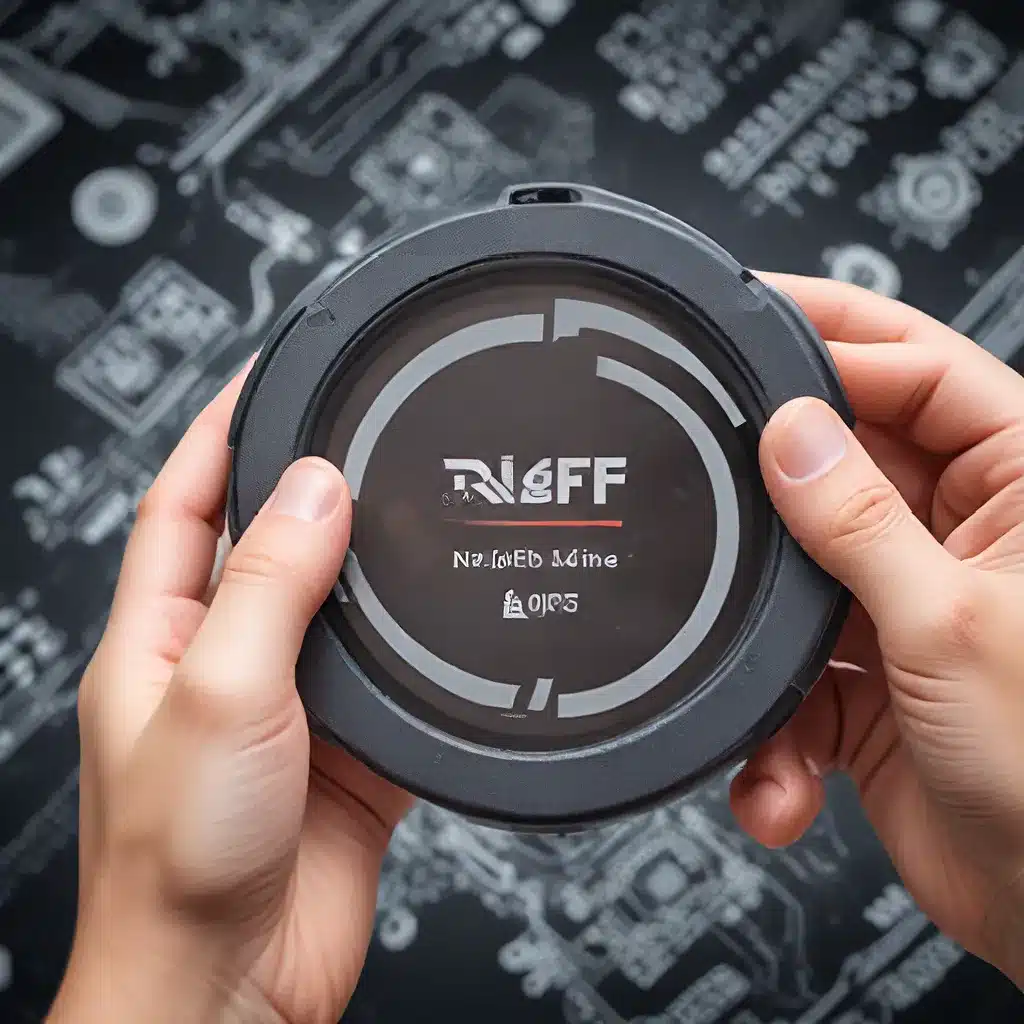
In the rapidly evolving world of sensor networks and the Internet of Things (IoT), RFID (Radio Frequency Identification) and NFC (Near-Field Communication) technologies have emerged as crucial enablers, driving revolutionary advancements across a wide range of applications. These cutting-edge technologies are redefining the way we approach sensor design, data collection, and interconnectivity, ultimately shaping the future of the sensor network and IoT landscape.
The Rise of RFID and NFC in Sensor Networks
RFID has long been a staple in the sensor network ecosystem, providing wireless identification, tracking, and data transmission capabilities. With its ability to operate without direct line-of-sight and over short distances, RFID has proven invaluable in industrial, logistics, and retail environments, enabling seamless asset management, inventory tracking, and supply chain optimization.
Advancements in microcontroller technology, particularly the Arm Cortex-M family, have further enhanced the capabilities of RFID systems. These powerful and energy-efficient microcontrollers have enabled the integration of more advanced sensors, processing, and communication features, allowing RFID to play a pivotal role in the development of smart sensor networks.
Similarly, NFC technology has gained significant traction in the IoT space, offering seamless connectivity and data exchange between devices. By leveraging the inherent proximity-based communication, NFC enables intuitive device pairing, wireless payment, and access control applications, all of which are essential in the context of sensor networks and IoT.
Empowering Sensor Design with RFID and NFC
The integration of RFID and NFC technologies into sensor design has unlocked a myriad of possibilities, transforming the way sensor networks operate and revolutionizing the IoT landscape.
One of the key advancements is the incorporation of neural processing units (NPUs) into microcontrollers and microprocessors. NXP’s MCX N series MCUs, based on the Arm Cortex-M33 architecture, have introduced this powerful capability, enabling real-time inference and classification of sensor data using machine learning techniques. This integration of edge computing and machine learning empowers sensor networks to make more intelligent, autonomous decisions, paving the way for enhanced situational awareness and advanced automation.
Furthermore, the adoption of Gallium Nitride (GaN) technology has had a profound impact on sensor design and IoT applications. GaN-based power electronics and motor drivers have enabled the development of smaller, more efficient, and longer-lasting sensor nodes, addressing critical challenges in energy management and thermal management. This, in turn, has led to the emergence of more versatile and cost-effective sensor solutions, driving widespread adoption across various industries.
Securing Sensor Networks with RFID and NFC
As sensor networks and IoT systems become increasingly ubiquitous, the importance of security and data privacy has become paramount. RFID and NFC technologies play a crucial role in addressing these concerns, providing robust mechanisms for authentication, encryption, and access control.
Cryptographic protocols and secure element hardware integrated within RFID and NFC chips ensure the integrity and confidentiality of sensor data, safeguarding critical information from unauthorized access or tampering. Furthermore, the inherent proximity-based communication of NFC enhances the overall security posture of sensor networks, limiting the attack surface and reducing the risk of remote exploits.
Advancements in functional safety (FuSa) for microprocessors and microcontrollers have also played a pivotal role in securing sensor networks, particularly in safety-critical applications. These FuSa-enabled systems provide robust fault detection, isolation, and recovery mechanisms, ensuring the reliable and secure operation of sensor networks in the face of potential failures or cyber threats.
Revolutionizing IoT Applications with RFID and NFC
The integration of RFID and NFC technologies into sensor networks has unlocked a wealth of innovative IoT applications, transforming industries and redefining the way we interact with our surroundings.
In the realm of industrial automation and robotics, these technologies have enabled the development of more intelligent, connected, and autonomous mobile robots. Advancements in edge computing, computer vision, and SLAM (Simultaneous Localization and Mapping) algorithms, combined with RFID and NFC-enabled sensor networks, have empowered mobile robots to navigate complex environments, collaborate seamlessly, and adapt to changing conditions. This has revolutionized the logistics, manufacturing, and warehousing industries, driving efficiency, flexibility, and improved safety.
In the healthcare sector, RFID and NFC-powered sensor networks have transformed patient monitoring, asset tracking, and medical supply management. Sensor-equipped wearables and implants can continuously track vital signs, medication adherence, and patient movements, providing healthcare professionals with real-time data to improve diagnostics, treatment, and outcomes. Additionally, the seamless integration of RFID and NFC technologies has streamlined hospital operations, optimizing resource utilization and enhancing patient safety.
The Future of Sensor Networks: Sustainability and Collaboration
As the sensor network and IoT landscape continues to evolve, the integration of RFID and NFC technologies is poised to play a pivotal role in addressing the growing demand for sustainable and collaborative solutions.
The energy-efficient nature of RFID and NFC, coupled with advancements in battery technology and power management, is enabling the development of sensor networks that are more environmentally friendly and can operate for extended periods without the need for frequent battery replacements or recharging. Emerging battery chemistries, such as sodium-ion, offer promising alternatives to traditional lithium-ion, providing improved sustainability and resource availability.
Furthermore, the inherent connectivity and interoperability of RFID and NFC technologies are paving the way for collaborative sensor networks and swarm robotics. By leveraging wireless protocols like MQTT and CoAP, sensor nodes can seamlessly communicate and coordinate, sharing data and tasks to achieve common goals. This collaborative approach enables the deployment of multi-robot systems and distributed sensor arrays in applications such as search and rescue, environmental monitoring, and logistics optimization.
As the sensor network and IoT landscape continues to evolve, the integration of RFID and NFC technologies is poised to play a pivotal role in shaping the future. With their ability to enhance sensor design, security, and connectivity, these innovative technologies are revolutionizing the way we approach the collection, processing, and utilization of sensor data, ultimately transforming industries and improving our lives.